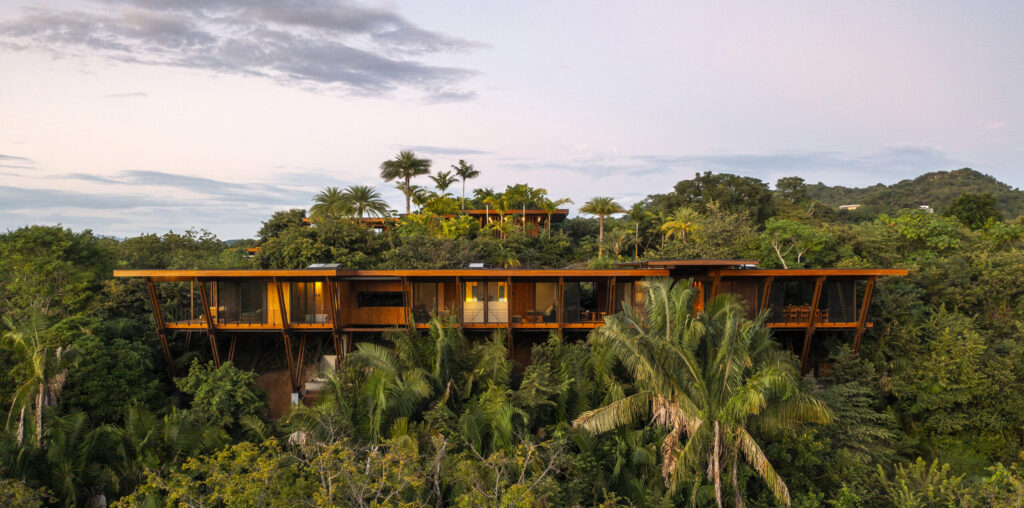Architizer’s 13th A+Awards features a suite of sustainability-focused categories that recognizing designers that are building a green industry — and a better future. Start your entry to receive global recognition for your work!
Globalization has changed nearly every aspect of our lives — how we communicate, work and spend our days. Architecture, of course, is no exception.
In many cities today, you can see the results of this global approach — so called iconic buildings that stand out but don’t always (or more like…never) blend with their surroundings. While these structures succeed in making a statement, they end up feeling disconnected from the local identity, leading to a sense of sameness from one city to the next. This is one of the downsides of globalization: losing the unique character that gives each place its identity.
Luckily, there’s a shift happening. More architects are turning back to the local — whether through materials, traditions or adapting to the natural environment — to create buildings that aren’t just innovative in a technical sense, but also deeply connected to their specific location. This return to contextual architecture was a recurring theme at Architizer’s Future Fest this year, where architects from all over the globe spoke about their efforts to balance global design with local relevance.
Inspired by these incredible talks, this article will explore three case studies, each in a different context, demonstrating how architecture can be both globally aware and locally rooted.
Salagnac Arquitectos: Designing with Nature and Local Knowledge
Salagnac Arquitectos has a clear mission: to bring people closer to nature and improve their well-being through architecture.
Based in Costa Rica, a country known for its “blue zone” status — where people live longer, healthier lives — their approach reflects a deep understanding of how the natural environment can improve everyday life. As Principal Evangelina Quesada put it, “The secrets of health and happiness are here [in Costa Rica] and we’re trying to use architecture to get us closer to these life experiences.”
A prime example of this philosophy in action is the Loma Sagrada House. Built on land once degraded by livestock, the project transformed the site into a regenerative space. Rather than disrupt the landscape, Salagnac minimized earth movement, preserved the natural soil structure and used plantation-grown wood. The house itself is designed to take advantage of the microclimate, with natural ventilation and solar energy systems keeping things sustainable.The result? A home that not only reduces environmental impact but also makes the most of its natural surroundings, proving that architecture can be regenerative, not just sustainable.
Casa de las Estrellas, a preschool, follows the same logic. The design uses organic forms and roundwood structures to create a space that feels connected to the earth. The open-air classrooms encourage students to engage with their environment, reflecting the school’s Waldorf-inspired approach to education.
During their Future Fest talk, Spendlingwimmer and Quesada explained the numerous benefits of this setup, emphasizing how learning in such a natural environment helps children develop a stronger connection with the world around them.
By being surrounded by nature, children are more attuned to their sensory experiences, leading to improved cognitive development, emotional well-being and creativity. The architecture is designed not only to encourage learning but also to enhance well-being from an early age, combining education with the benefits of natural exploration.
Takeaway: While Salagnac’s designs are rooted in Costa Rica’s unique environment, the broader principles behind their work—such as the integration of movement, natural light and connection with nature—can be applied in other parts of the world. Even if architects can’t replicate Costa Rica’s tropical setting, they can still create spaces that promote well-being, engage with the local climate and foster a deeper relationship with the natural environment. In a globalized world, these ideas are increasingly relevant as architects everywhere look for ways to design with health, sustainability and human experience in mind.
Mecanoo: Global Expertise with Local Collaboration
Rodrigo Louro, Associate Architect at Mecanoo, explains the firm’s philosophy as staying open-minded and allowing each project to be shaped by its specific context. “Mecanoo is not known for a formal language. We don’t have a certain signature design. By understanding the context, we are able to create very different buildings and projects around the globe,” he shared. This adaptability — combined with collaboration with local architects — keeps their work globally relevant yet rooted in local identity. To illustrate this approach, Louro spoke about several of their projects in Taiwan, highlighting how each was designed in response to its environment and community.
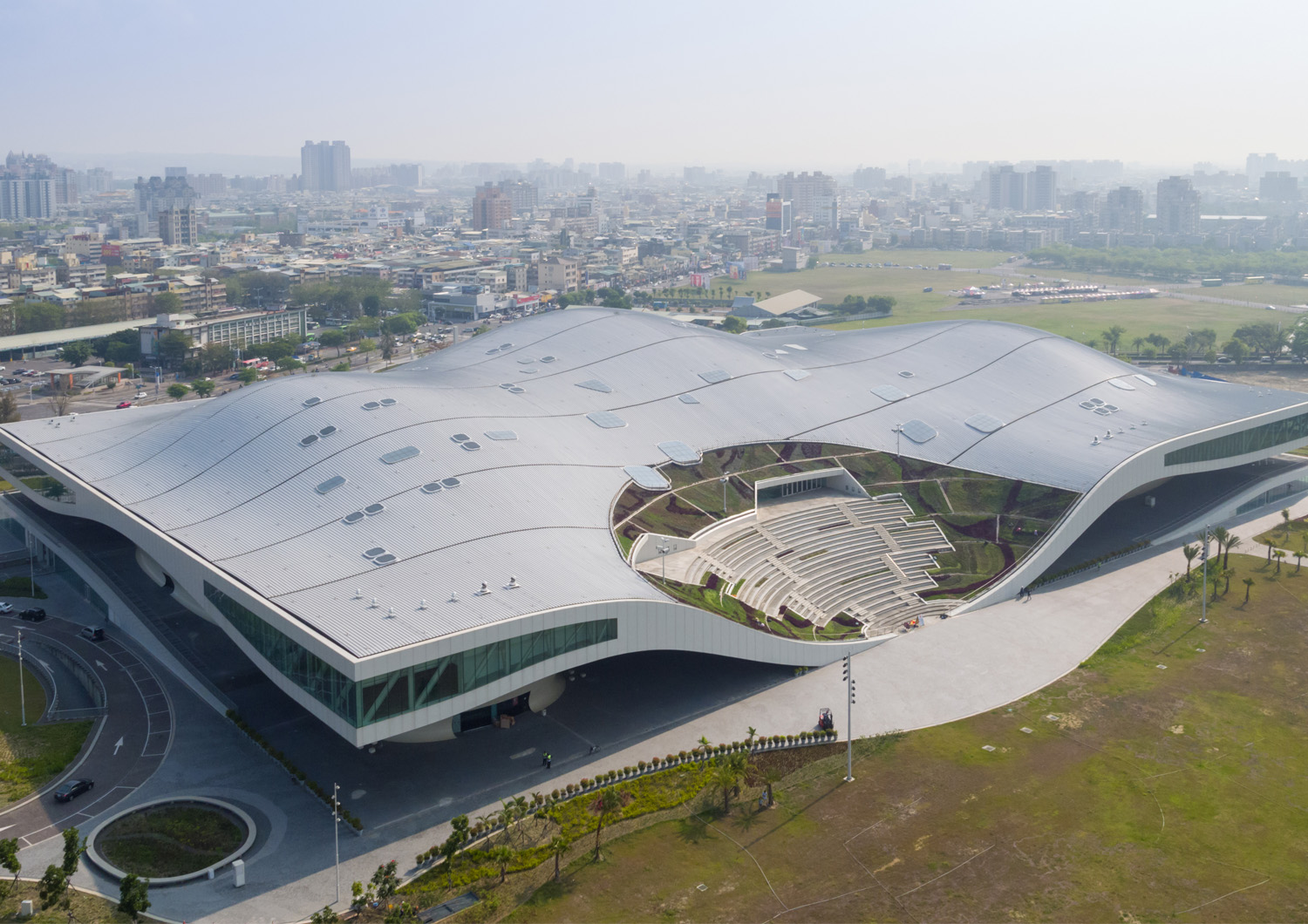
On one hand, their work on the Kaohsiung Center for the Arts shows how design can emerge directly from the natural environment. Rather than dictating a rigid structure, Mecanoo took inspiration from the surrounding banyan trees—famous for their wide canopies that create informal public gathering spaces. By mimicking this form, they created sheltered public areas that seamlessly merge with the park. The takeaway? Good design often comes from listening to the landscape and respecting the existing patterns of a place.
On the other hand, with Kaohsiung Station, Mecanoo adopted a more multi-functional approach. Here, the focus wasn’t just on merging into the landscape but on how the station could serve the community in a more functional sense. The sprawling canopy shelters not only the transport elements but also cycling paths, plazas and spaces for community events. It’s a reminder that buildings can do more than serve their primary function—they can shape public life in ways that encourage interaction and bring people together.
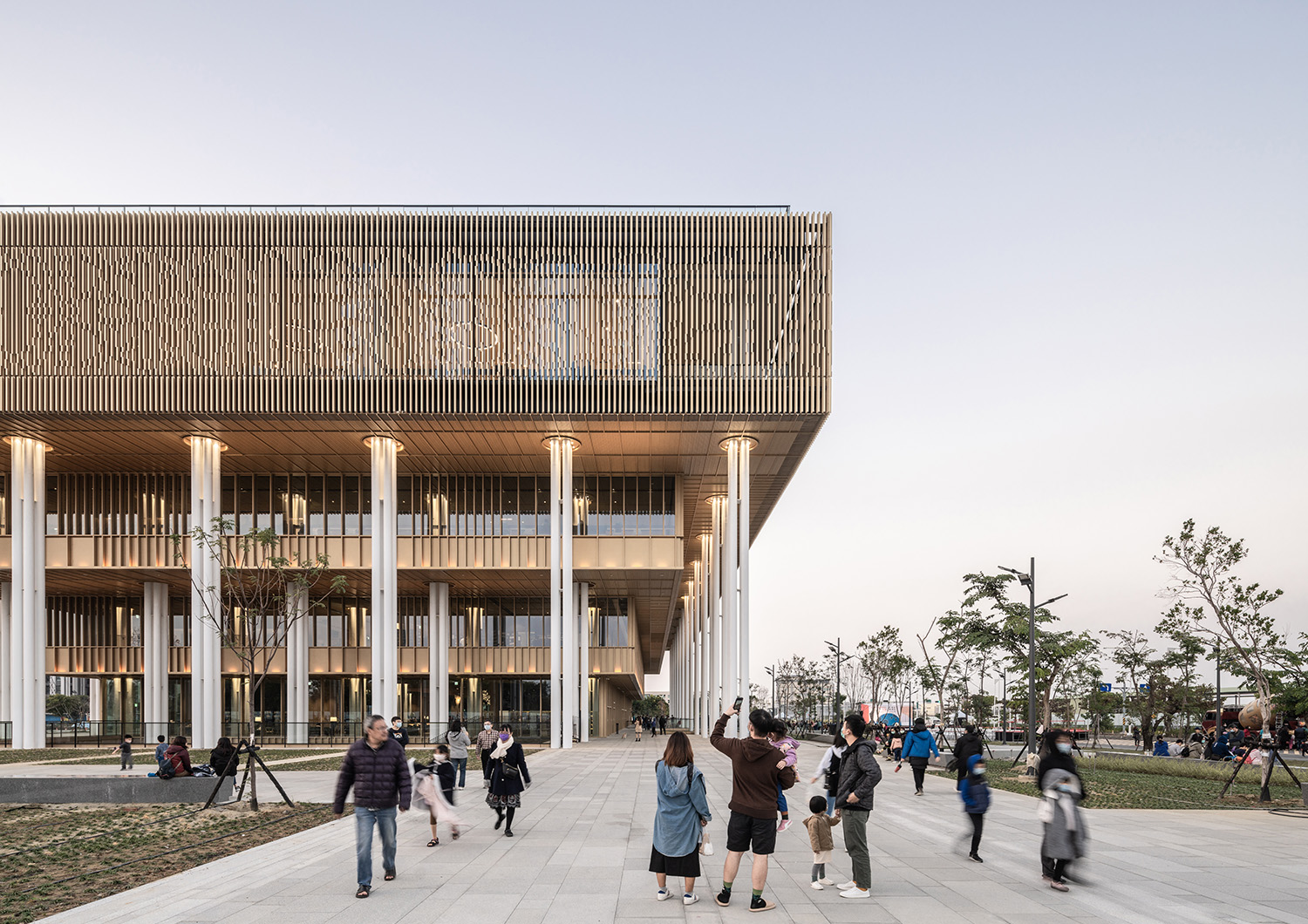
Collaboration is another critical theme in Mecanoo’s work, as exemplified by the Tainan Public Library. Working with local firm MAYU, they incorporated elements of traditional Tainan architecture into the design, like vertical slats that reference the local building vernacular. This partnership allowed the project to integrate cultural and environmental sensitivities that might otherwise be missed. By collaborating with local architects, they enriched the project’s connection to its context, showing how the right partnerships can create more meaningful, grounded architecture.
Takeaway: Mecanoo’s work in Taiwan highlights three key lessons for architects: respond to the local environment in your design, think about how buildings can serve multiple roles for the community and collaborate with local partners to truly embed architecture in its cultural and environmental context. Even if you’re not working in a foreign location, collaboration can still be about engaging with stakeholders, the people who will actually use the space, to ensure the design meets their needs and reflects the unique characteristics of the community.
Alison Brooks Architects: Merging Historical Influence with Modern Design
During her Future Fest talk, Alison Brooks shared how her early experiences shaped her unique approach to combining historical forms with modern architecture. Growing up in Southern Ontario, she was inspired by both the character of historic neo-Romanesque buildings and the optimistic futurism of 1960s modernism.
“I think in a way I’ve always had this idea that there must be some way of synthesizing the historic beauty and craft of architecture with the optimistic futurism of modernism,” Brooks explained. This philosophy is at the heart of her work—balancing tradition with forward-thinking design.
One example of Alison Brooks’ approach is the Cohen Quad at Oxford, where she reimagined the traditional collegiate quadrangle. Instead of the standard square layout, the building features an S-shaped design that weaves between two courtyards, creating a dynamic flow between internal and external spaces. This reconfiguration challenges the familiar archetype, with cloisters, staircases, and garden walks connecting the spaces in a narrative route. At the heart of this project are glulam arches, referencing the historic vaulted forms of Oxford’s older buildings. But rather than using stone, Brooks opts for sustainable timber, adding a warm, modern touch that connects the building to its historical context while also aligning with her focus on sustainability and long-lasting craftsmanship.
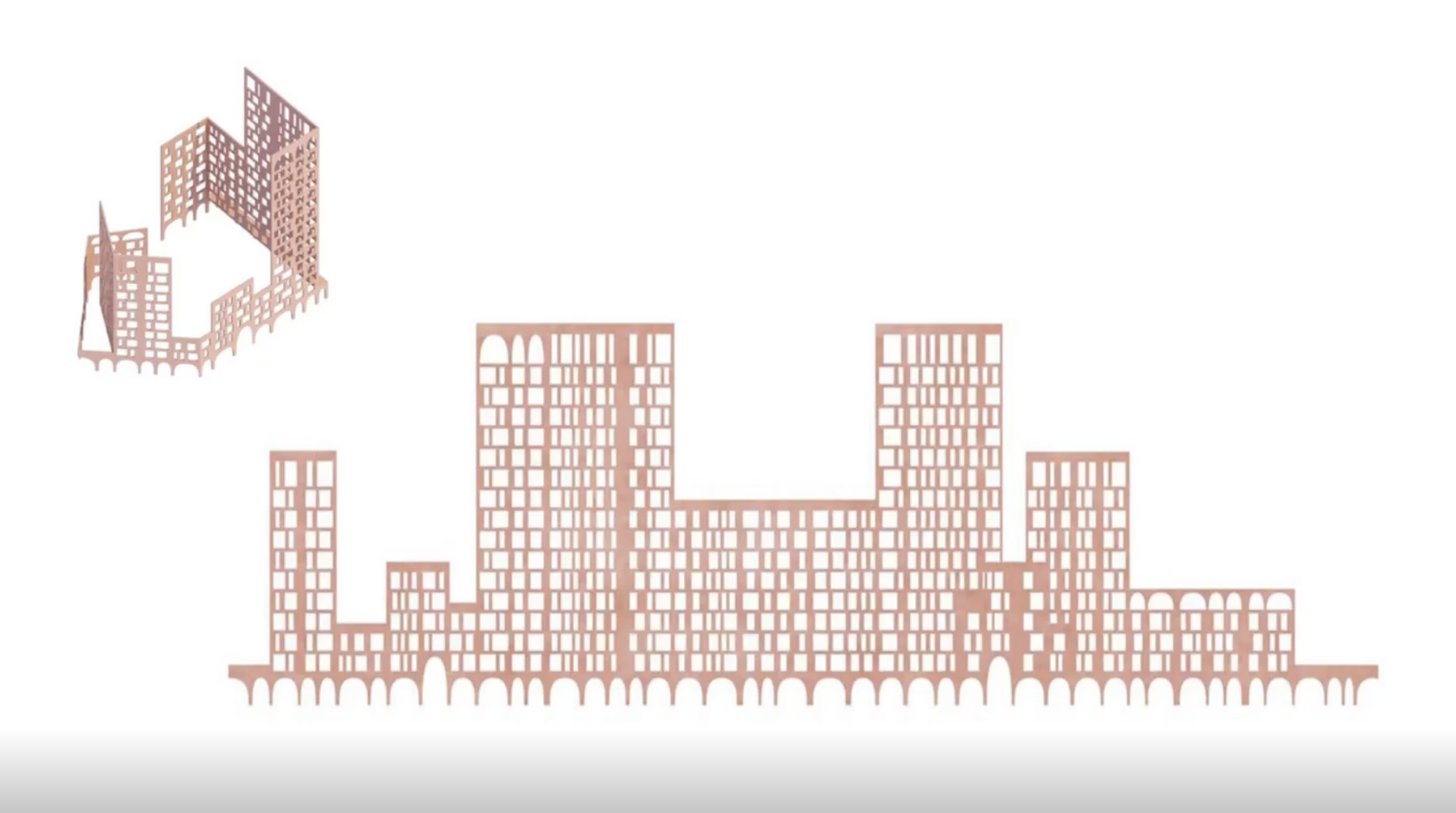
Cadence King’s Cross, London by Alison Brooks Architects
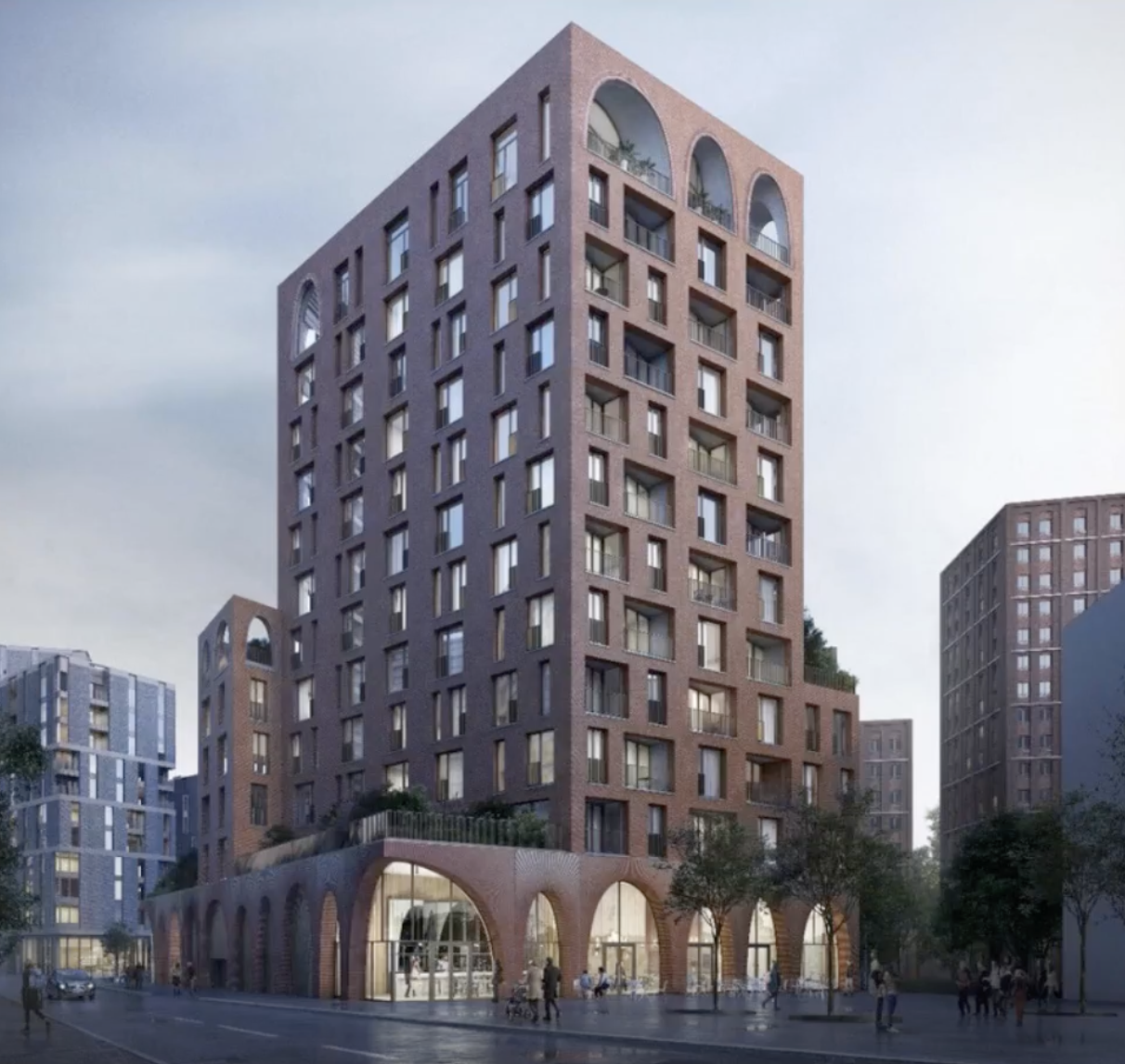
Cadence King’s Cross, London by Alison Brooks Architects
Brooks’ use of arched forms also appears in her residential project, Cadence in King’s Cross, London. This mixed-use building integrates arches to create a distinctive identity, with a colonnaded base that brings a sense of civic grandeur while softening the overall scale. Inspired by the area’s industrial past, the building connects to its surroundings through meaningful references. As she mentioned in her Future Fest talk, these design choices help create a sense of continuity and place even in large urban developments.
Takeaway: Alison Brooks Architecture’s work demonstrates how historical forms and familiar archetypes, like arches, can be reimagined for today’s world. Whether through sustainable materials in Oxford or nods to industrial heritage in London, her approach bridges past and present. This combination of historical references and modern techniques offers a way to design spaces that feel grounded, relevant and forward-thinking all at once.
From Local Roots to Global Reach
As these examples from Salagnac Arquitectos, Mecanoo and Alison Brooks show, the future of architecture doesn’t have to be about choosing between the global and the local—it’s about finding a balance. By integrating nature, culture and history into their designs, these architects are creating buildings that are not only innovative but also deeply connected to their specific contexts.
Architizer’s 13th A+Awards features a suite of sustainability-focused categories that recognizing designers that are building a green industry — and a better future. Start your entry to receive global recognition for your work!
